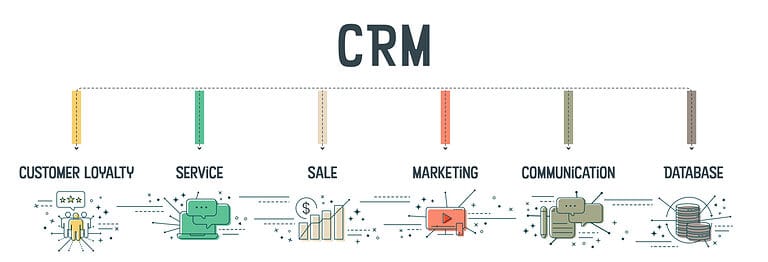Maximize Your Revenue: A Step-by-Step Guide to Refining Your Sales Process
When it comes to increasing sales, efficiency is key. An optimal sales process serves as your road map to not only close deals, but also ensure they align perfectly with your business aims. This article provides a practical framework to streamline each stage of your sales process, giving you the clarity and consistency needed to excel at customer engagement and magnify success.
Key Takeaways
Standardizing the sales process by flowcharting each step allows for a repeatable, efficient methodology that improves customer experience, aligns with the company’s objectives, and reveals inefficiencies through CRM analysis.
Tailoring the sales process involves learning your sales team’s current practices, setting measurable goals, understanding your market and customers, and ensuring it aligns with buyer personas to foster stronger relationships and successful deal closures.
Continually measuring and improving the sales process is necessary for sustained success, which is achieved by monitoring KPIs, analyzing sales trends, using technological tools like CRM and automation, and involving the sales team in developing and refining strategies.
Understanding the Sales Process

Sales is a complex landscape and chaos can impede progress. To keep on track, sales leaders create a standardized process that guides reps in the progression of prospecting to closing deals with clear exit criteria along the way. This structured map helps ensure an experience consistent with your brand values for every potential customer by mapping out each step needed from start to finish. Utilizing tools such as CRM software gives sales managers insight into how activities align within various stages of their pipeline so they can identify where revenue-driving opportunities are located efficiently across all levels of sale operations.
The role of a sales process
The sales team is essential for a business to reach success. To ensure that the proper guidelines are followed and customer needs are met, an organized and focused approach should be adopted which allows analyzing their own processes in order to increase revenue growth as well as comprehend the reasons of stalled sales activity. Refined such defined strategies will provide teams with greater efficiency results within their operations.
Relationship-building combined with attentive listening has become fundamental during any part of the selling process. These allow constructing trust between seller/buyer by means of creating comfortable situations where potential customers feel confident enough while completing purchases through this structured way towards aiding seamless buyer experiences, essentially turning sellers into trusted advisors thus improving overall client relationships throughout each purchase stage effectively.
Key components of an effective sales process
A successful sales process is essential for a top-performing sales leader. Much like an organized playbook, it outlines each step of the process and provides access to pre-made materials such as email templates which can be adapted depending on prospects being qualified. The five main steps consist of prospecting, lead qualification, relationship building, presenting solutions and finally closing deals. Thus forming the crux of your company’s individualized funnel guiding customers from initial contact through to close. Aligning effective plays with this structure assures optimal results in terms that not only benefit overall business objectives but also leads to greater efficiency amongst members within the entire team responsible for meeting these targets day after day with their efforts made towards complete success when selling services or goods acquired by potential consumers at any given time period.
Developing Your Custom Sales Process

To equip your sales reps and team with the best tools, you need to tailor a standardized sales process for them. Start by analyzing their current approaches when it comes to converting prospects into customers. To do this properly, define goals/metrics. Research markets & consumers. Test/fine strategies, monitor progress in the pipeline of activity such as engagement levels and win or loss rates, and assess performance overall. It’s also crucial that you adjust your approach according to buyer personas – enabling everyone involved in closing deals more successfully due to its effectiveness across multiple stages of customer journey analysis, mapping out areas where improvements can be made.
Assessing your current sales approach
In order to perfect your sales approach, it is necessary that you have an understanding of the current strategy. Firstly, do thorough research into consumer trends and buyer demographics while analyzing competitors’ tactics too. Assess employees’ capabilities with a SWOT analysis for discovering distinct selling points plus strong customer ties. Ensure measures are put in place which monitor the complete process from start to finish.
The next step entails identifying any improvements within the technique by examining existing competencies and monitoring performance closely using KPIs linked with patterns detected through data evaluations or winning-loss rates regarding sales activity together with client engagement result reviews – all aimed at finding more effective methods such value-based practices tailored towards sharpening core abilities like providing good service quality and increasing presentation/prospecting potentials accordingly. Finally, pay attention when studying how successful the overall outcome has been following changes in plan actioned on track progress taking advantage of those actions along related lines monitored elsewhere, especially via tracking activities alongside their likely effects projected inside applicable pipelines used here specifying what’s involved where relevant results generated will show visible beneficial impacts made.
Aligning with buyer personas and their journey
The sales team is highly dependent on buyer personas to tailor their strategies in order to successfully reach and convert potential customers. Compiling data from interviews with existing clients as well as surveys can provide helpful information for constructing a customer profile that meets the company’s needs. Understanding the buyer’s journey – which outlines each stage of purchase decision making, allows teams to effectively target pain points and shape an ideal customer experience. This facilitates smoother execution of sales practices while boosting overall satisfaction along every step of the way towards purchasing a product or service.
Stages of an Optimized Sales Process

Sales teams should examine their own sales process to ensure that it aligns with the objectives they are striving for. Doing this involves studying each stage of the sales pipeline and making improvements whenever necessary, such as prospecting, qualifying leads, presenting solutions and services, confronting any objections during negotiations until finally closing deals successfully. By taking a closer look at every step in its entirety and consistently upgrading procedures. Businesses can construct an efficient working model which will boost their overall sales performance.
Prospecting and lead generation
Sales is a process that starts with finding possible buyers who could need the goods or services. Investigating prospects thoroughly can help increase sales, as it provides deep insights into what their needs and troubles are.
Social media plays an important role in getting more potential customers for your product by introducing alluring lead magnets, running relevant ads offering discounts, and engaging target audience through meaningful content related to your field of work.
Lead qualification and prioritization
When identifying potential leads, the next step is to assess their suitability with lead qualification. This process entails ranking prospects based on how likely it is that they can be converted into buyers and allowing sales representatives prioritize those who have a higher chance of success. Sales personnel should take into consideration the budget available for the product, who holds decision-making power in regards to its purchase, if there’s an actual need or not and when would be suitable timing for them to make a purchase.
Qualified leads must also separately consider any people whose time frame exceeds what was expected from typical sales cycle scenarios, this will enable reps look back at such individuals later on so as determine whether anything has changed which could help pave way towards progress once more.
In conclusion, by targeting qualified prospective customers through priority evaluation criteria based upon probability conversion rates according to budgetary restraints and other important factors such as authority figures and needs analysis, then revising cases where timelines exceed standard procedure, we ensure that lead qualifications assist both marketing teams throughout the whole prelude up until sales department concludes individual accounts successfully!
Effective communication and relationship building
For sales, communication is integral. Offering valuable services and information can help you form strong connections with potential customers. An effective way to do so is through relationship-based selling techniques which will aid in the development of relationships over time.
Lead nurturing refers to tending potential buyers throughout their whole buyer journey – this could be offering education regarding products or industry matters, customizing communications, as well as tackling frequent problems they may face. Keep in contact with cold leads also needs thoughtfulness since those prospects might now have access to a budget, authority or requirement that was unavailable before.
Presenting solutions and handling objections
In order to properly address objections, it is important for sales representatives to be aware and empathetic while listening carefully. Customizing each presentation according to the prospect’s individual needs and pain points can effectively demonstrate product value that fits their specific situation. Involving an engineer or executive in a meeting provides customers with more confidence in service quality by allowing them answers directly on complex queries relating to any reservations they have about the offering. When building relationships with potential buyers, being able to provide tailored solutions that target key areas of concern should be an integral part of successful selling strategies employed by sales personnel moving forward.
Closing deals and securing repeat business
Reaching the final phase of a sales process is vital, as it ensures confirmation and launches what comes next. To complete a sale efficiently, both indirect and direct methods can be used. When somebody may not yet decide to go ahead with an agreement, engaging them in nurturing activities or staying in contact via follow-ups are effective tactics. As soon as agreements have been made formalized, responding promptly to any leftover issues while providing clear directions for future steps must stay at the forefront all timeframes.
Measuring and Improving Your Sales Process

In order to ensure success in sales, a continual process of improvement is necessary. This requires regularly monitoring key performance indicators (KPIs) and evaluating outcomes so trends can be determined and areas for development identified. By assessing these factors it enables one to refine their techniques as well as furthering successful results from the sales strategy implemented.
Key performance indicators (KPIs)
KPIs provide an essential guidance system for the sales team, allowing them to accurately measure and track their progress. These performance indicators can assist in tailoring activities based on customer demographics. They set clear goals which then allow teams to review the outcomes of those objectives. By utilizing KPIs, it is possible to effectively manage and refine a sales process while making informed decisions quickly. Overall, this helps ensure that your staff are best able to capitalize on successes and improve where necessary within any given time frame or project goal.
Analyzing results and identifying trends
Sales teams identify patterns and trends in their sales data by carrying out an analysis of the information. This involves setting objectives, selecting methods to analyze it, and producing a reporting system for collecting and assessing all relevant facts before using the results as input for necessary changes or improvements. Sales trend analysis looks at specific periods so that trends can be identified over time, essentially shining a light on current performance levels which will help shape future strategies accordingly.
Leveraging Sales Tools and Technology

In today’s digital era, it is essential for any sales reps and team to make use of the right kind of tools and technology. Such resources may include but are not limited to CRM systems, automation tools, analytics software as well as email tracking or even enablement platforms that cater towards improved productivity in regards to their daily tasks.
Not only do these instruments streamline certain processes related to selling goods, but also offer considerable time saving which allows one’s sales representatives to focus on activities offering greater returns instead.
These aforementioned technologies guarantee a comprehensive increase in efficiency while providing valuable insights into ongoing initiatives regarding your company’s very own sale cycles. An absolutely vital part when striving ever closer to success!
CRM systems for managing leads and customer relationships
CRM systems are the core of a productive sales process, providing beneficial insights and enhancing customer retention. It automates sales reporting, streamlines communication channels between customers and companies, and simplifies procedures all while delivering meaningful analytics to measure success in terms of increased revenue.
Automation for streamlining sales tasks
Automation tools are like the supporters of your sales team, streamlining tasks that take a long time and freeing up reps to focus on meaningful activities. This helps cut costs while allocating more resources for administrative work or improving customer service. It speeds up the entire process by optimising teamwork and thus speeding up the sales cycle overall from start to finish.
Collaborating with Your Sales Team
To refine your sales process, you need to involve your sales reps and equip them with ongoing training and support. This optimization of the procedure will benefit not only efficiency but also buy-in from the members of your team that promote their motivation and engagement in regard to selling activities.
Involving sales reps in process development
Getting your sales reps involved in the formation of a new sales process isn’t only to earn their acceptance, it is also essential for taking advantage of their knowledge and experience. Incorporating them into development will ensure that the system created works well with what actually takes place onsite, thereby making certain its efficacy and accommodating all team requirements.
Ongoing training and support
Having well-trained sales reps is crucial to the success of any sales team. Working together in close partnership, supplying key data points and having clear communication are all part of creating a successful strategy. Hiring the right people for each role is also important and understanding their strengths can help maintain an effective organizational structure. It’s essential to familiarize yourself with your sales staff so you’re able to convey company offerings more effectively. At the same time, giving them plenty of opportunities for dialogue as it promotes continuous growth within their roles. With ongoing coaching sessions, awarding recognition when due plus continual training workshops put into practice, top performance will soon be achieved!
Summary
Through this mission to streamline your sales process, we have gained a wealth of knowledge. Starting from recognizing the steps in the sales flow and establishing one’s own version, followed by evaluating performance then utilizing tools & tech to enhance it further. Enlisting help from employees who specialize in these fields is essential for amplifying income productivity. With an accurately-defined and personalized sale plan, you can boost efficiency considerably while deepening customer relationships with great ease, resulting ultimately in increased profits at all times.
Frequently Asked Questions
What are the 7 steps of the sales process?
The sales process is a cycle which consists of seven stages: identifying potential customers, reaching out to them, assessing if they are suitable prospects, nurturing leads and forming relationships with them, introducing offers while factoring in any obstacles that may arise during the transaction. Handling objections from interested parties before wrapping up by successfully closing the sale.
These steps help guide you through each step of selling something effectively and profitably.
Why is a standardized sales process crucial for sales teams?
Sales teams need to have a standardized sales process as it offers an organized system which helps reps measure, predict and gain insight into their sales efforts more accurately. This leads to improved results along with higher revenues for the team overall.
How can a CRM system enhance sales efficiency?
A CRM system offers multiple advantages to enhance sales output, such as tracking leads and building customer relations. It can offer helpful insight into sales trends, simplify communication processes, provide real-time access to data points related to selling efforts and automate mundane tasks. This range of features has a positive effect on the success rate in terms of profitability and time management for sellers alike.
What is the significance of regularly measuring the sales process?
It is essential to assess the sales process consistently in order to pinpoint any problems, enhance relevant elements as needed, and make informed decisions that are backed by data.
How does including sales representatives in process development enhance the sales process?
Sales representatives can be a great asset to the process of developing sales by bringing structure, responsibility, predictability and improved efficiency which all have positive effects on revenue. They will play an important role in ongoing assessment and improvement efforts.




